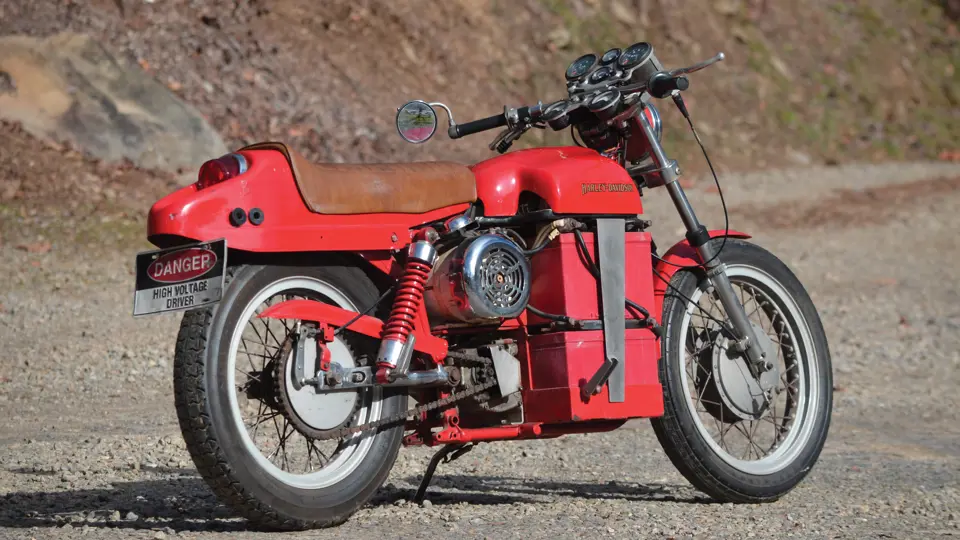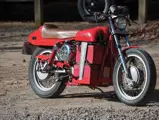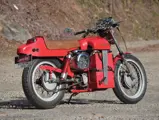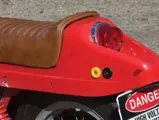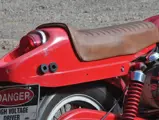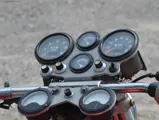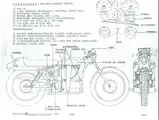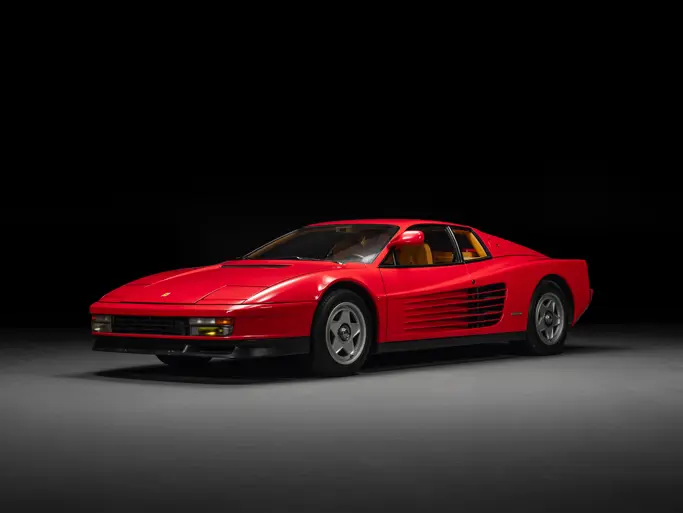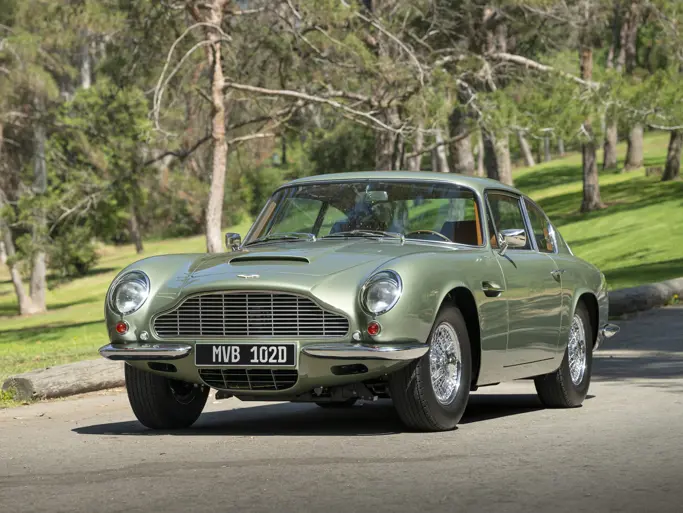Variable-speed electric motor, four-speed automatic transmission, Harley-Davidson Sportster chassis, 33 mm XLH fork, Sportster “Boattail” seat, and Harley-Davidson drum brakes. Wheelbase: 59 in.
The electric vehicle can be traced back to before the mid-1800s, when Robert Anderson, of Scotland, invented the first electric carriage, which was powered by an electric motor and non-rechargeable primary cells. Many of the first automobiles were electric, and at one point throughout history, they out-sold gasoline-powered vehicles. But with the expansion of lightweight, powerful internal-combustion engines, the introduction of the electric starter, and the cheaper availability of gasoline, the early 1900s saw the decline of personal electric vehicles.
References to the first electric motorcycle can be found in patents as early as the late 1860s, and over the next 100 years, numerous attempts to mass-produce two-wheel electric vehicles hit the market, including efforts by Popular Mechanics, the Indian Motorcycle Company, and Corbin-Gentry. In 1973, Mike Corbin set the first electric motorcycle land speed record at just over 101 mph.
The 1978 Transitron Mk II Electric Prototype presented here is a one-of-a-kind machine that was built in Honolulu, Hawaii, by the Transitron Electric Corporation. Designers utilized the chassis from a 1971 Harley-Davidson XLH Sportster and reengineered the entire drivetrain by replacing the 900-cubic centimeter OHV internal combustion engine with a variable-speed electric motor and a series of deep-cycle batteries. Power is put to the rear wheel through an automatic four-speed transmission with chain-drive. Use of a proprietary control system with an integrated circuit mini-controller allows the machine to accelerate from 0–30 mph in 5–6 seconds. The machine’s instrument panel is mounted to the handlebars, which features an electric speedometer, a tachometer, and dual ammeters.
The motorcycle was formerly part of the renowned collection of industrial designer Brooks Stevens. Stevens was often credited with the concept of “planned obsolescence,” and his impact on the transportation industry was legendary, as he designed such iconic vehicles as the Jeep Wagoneer, the Excalibur, the Oscar Mayer Wienermobile, and the Harley-Davidson Hydra-Glide. He also had a fine museum of automobiles and motorcycles in Mequon, Wisconsin, where the Transitron was displayed until its acquisition by the previous owner in 1995. The current owner acquired the prototype soon thereafter and has continued to display the unique Electric amongst other historic motorcycles.
This is a wonderful survivor from the dawn of the modern electric vehicle.




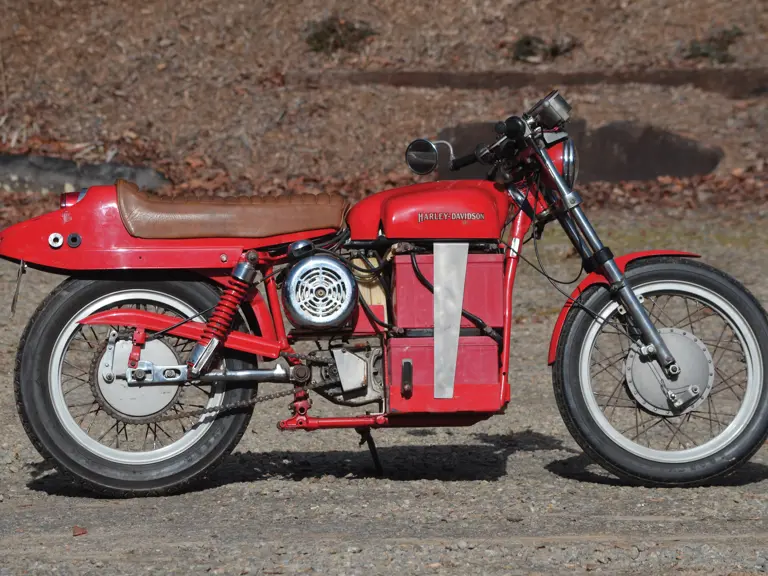

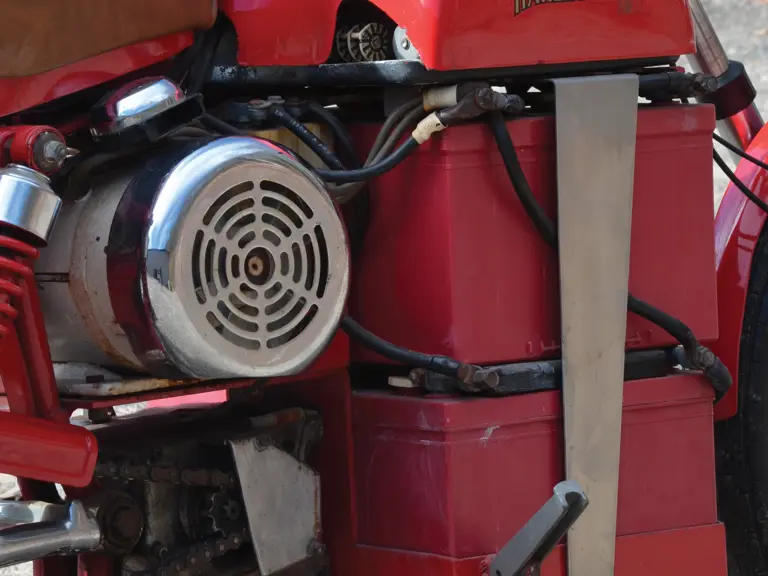

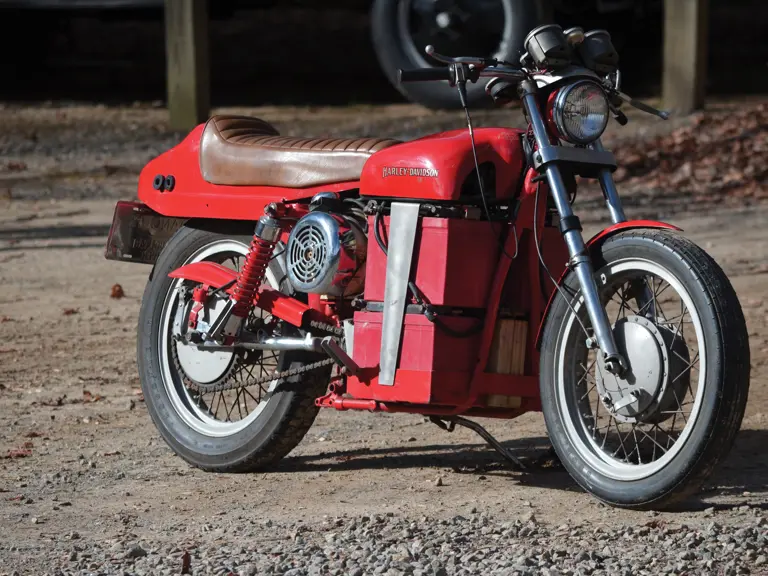
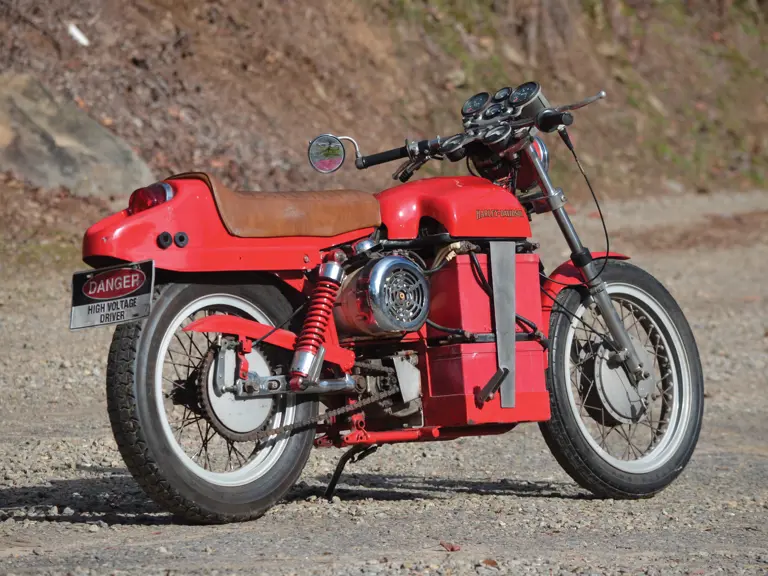
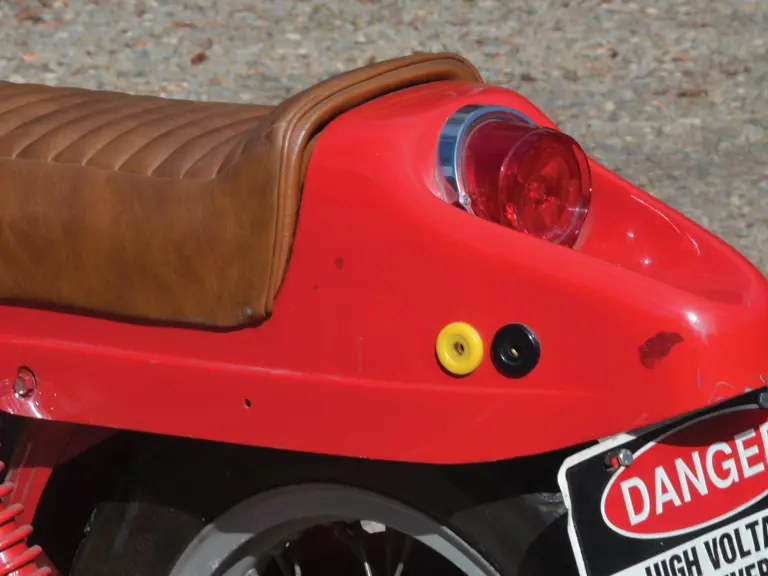


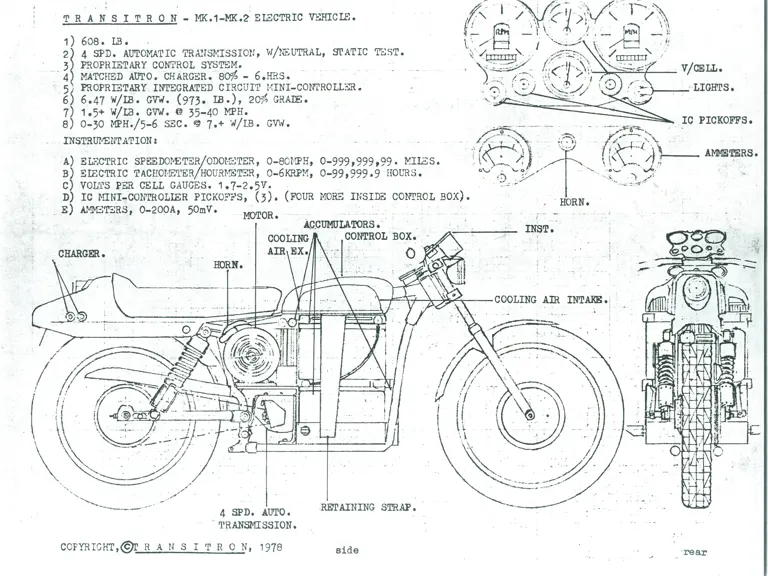
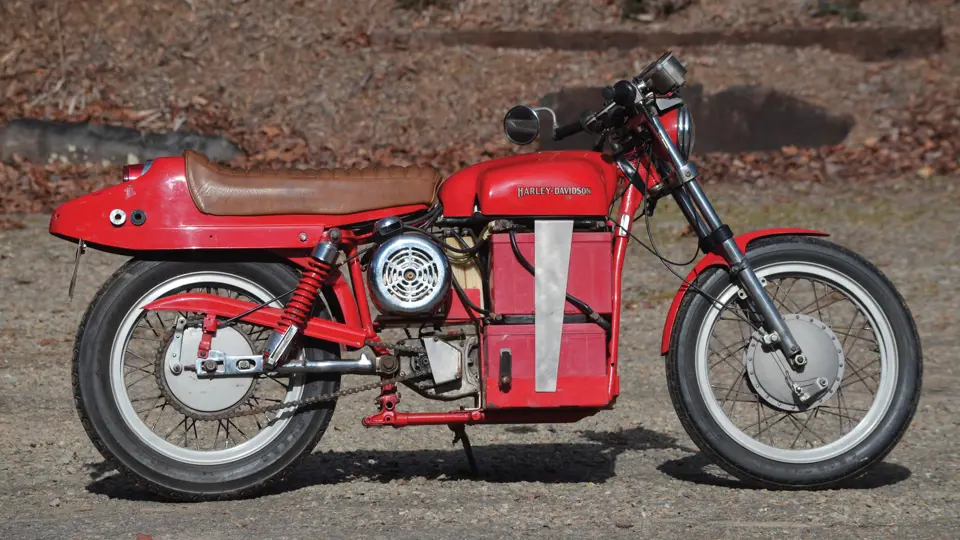
 | Amelia Island, Florida
| Amelia Island, Florida

